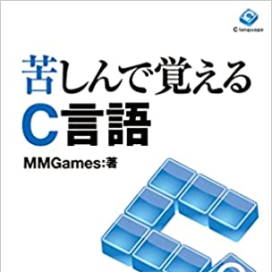
Read it right next to your computer.
Book version bitter C
#include <stdio.h>
int main(void)
{
int side, high, square;
scanf("%d,%d", &side, &high);
square = side * high / 2;
printf("%d\n", square);
return 0;
}#include <stdio.h>
int main(void)
{
int price;
printf("定価を入力して下さい : ");
scanf("%d", &price);
printf("1割引 = %d円\n", (int)(price * 0.9));
printf("3割引 = %d円\n", (int)(price * 0.7));
printf("5割引 = %d円\n", (int)(price * 0.5));
printf("8割引 = %d円\n", (int)(price * 0.2));
return 0;
}
Learning C language through suffering (Kushi C) is
This is the definitive introduction to the C language.
It systematically explains the basic functions of the C language.
The quality is equal to or higher than commercially available books.